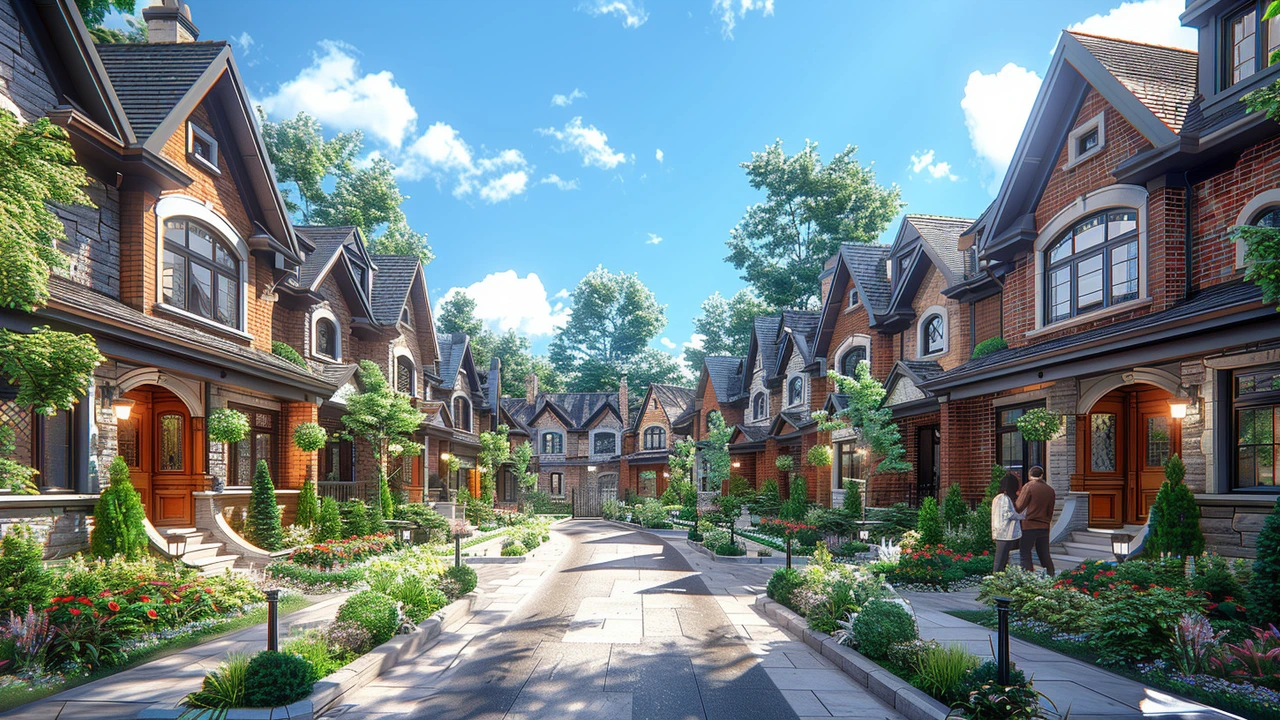Exploring Colonial Revival Architecture: A Nostalgic Journey Through Time and Design
 Mar, 19 2024
Mar, 19 2024
Rediscovering the Charm of Colonial Revival Architecture
Have you ever wandered down a quaint street, lined with homes that seem to whisper tales of yesteryear, and found yourself transported to another era? That's the magic of Colonial Revival architecture. This style, steeped in American history, began in the late 19th century as a wave of nostalgia for the country's colonial past swept over the nation. It was more than just a revival; it was an homage to the architectural integrity and simplicity of the early American colonies. But what exactly defines a Colonial Revival home?
At its core, Colonial Revival architecture cherishes symmetry, grandiosity, and understated elegance. Think gabled roofs, dormer windows, and a centered front door flanked by sidelights and topped with a decorative crown. These homes often feature a balanced arrangement of windows, columned porches, and clapboard or brick exteriors. The resurgence of this style was partially a reaction against the highly ornate designs of the Victorian era, aiming instead for a return to classicism and proportion.
The Evolution of Colonial Revival Architecture
The Colonial Revival movement was not just a single style but a constellation of ideas, each paying tribute to America's architectural heritage. It saw variations from the strict replication of colonial models to creative adaptations that incorporated modern comforts and aesthetics. The Centennial Exposition of 1876 in Philadelphia played a pivotal role in igniting interest in America's colonial past, showcasing reconstructed colonial buildings and artifacts that captured the public's imagination.
Over the decades, the style evolved but always maintained its heart in the traditional motifs of early American architecture. The Great Depression and World War II saw a surge in its popularity, as people sought comfort in the familiar and stable designs of the past. By the mid-20th century, advances in technology and changing tastes led to a reinterpretation of the style, blending historical elements with contemporary needs.
Key Elements of Colonial Revival Architecture
Understanding the key elements of Colonial Revival architecture is like decoding the language of history and design. Symmetry is paramount, with doors and windows often evenly spaced and aligned. Roofs are typically side-gabled, pitched, or hipped, with minimal overhang. Chimneys are a focal point, usually centrally located or symmetrically placed on either side of the home. Interior spaces reflect a similar pursuit of balance and proportion, with formal entryways leading to a central hall flanked by living and dining rooms.
Material choice also plays a crucial role in achieving the authentic Colonial Revival look. Wood, brick, and stone are commonly used, each adding its character to the overall design. Decorative details, while restrained, are carefully considered - shutters, pediments, pilasters, and columns add touches of elegance without overwhelming the simplicity of the form.
Restoring and Renovating Colonial Revival Homes
Restoring or renovating a Colonial Revival home requires a delicate balance between preserving its historical essence and accommodating modern lifestyles. The first step is always a thorough assessment of the structure's condition, paying close attention to foundational elements like roofing, masonry, and woodwork. Understanding the home's historical context helps in making decisions that honor its architectural integrity.
When modernizing a Colonial Revival home, it's crucial to respect its original design principles. Kitchen and bathroom updates should blend seamlessly with the rest of the home, using materials and finishes that reflect the period's aesthetic. Adding or expanding spaces, like family rooms or master suites, calls for a careful approach to maintain the exterior's symmetrical appearance and the interior's cohesive flow.
Colonial Revival Architecture Today
Today, Colonial Revival architecture continues to be celebrated for its timeless beauty and adaptability. New constructions often draw inspiration from this style, integrating historical elements with energy efficiency and modern amenities. The charm of Colonial Revival homes lies in their ability to connect us to America's architectural heritage while providing a canvas for personal expression and contemporary living.
The appeal of Colonial Revival architecture transcends time, serving as a testament to the enduring nature of good design. It's a style that honors the past, welcomes the present, and inspires the future.
Preserving the Legacy of Colonial Revival Architecture
Preserving the legacy of Colonial Revival architecture is a collective responsibility. Homeowners, architects, and preservationists play a critical role in ensuring that these historical treasures are maintained for future generations. This involves advocacy for historic preservation, education about the style's significance, and thoughtful renovation practices.
Colonial Revival architecture is more than just a style; it's a piece of American history that continues to enchant and inspire. Through preservation and adaptation, we keep the spirit of the past alive, creating homes that are not only beautiful but also rich in story and character.